A History of Godzilla on Film, Part 4: The Heisei Era (1984–1996)
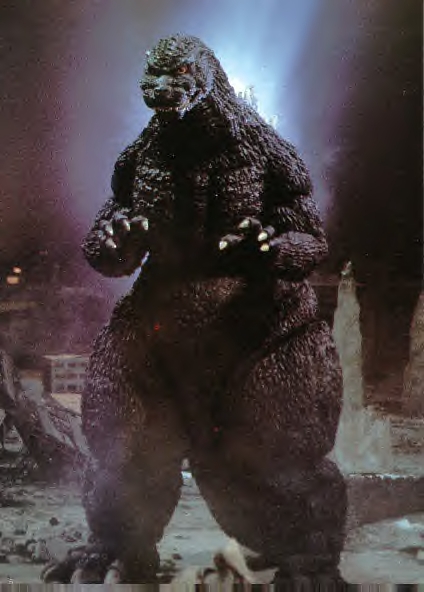 Other Installments
Other Installments
Part 1: Origins (1954–1962)
Part 2: The Golden Age (1963–1968)
Part 3: Down and Out in Osaka (1969–1983)
Part 5: The Travesty and the Millennium Era (1996–2004)
Addendum: The 2014 Godzilla
The Underwhelming Comeback: The Return of Godzilla (1984) and Godzilla 1985
After an absence of nine years, Godzilla smashed back onto screens in 1984 in a film simply titled Godzilla (Gojira) in Japan, but marketed as The Return of Godzilla to English-speaking markets. In modern movie lingo, The Return of Godzilla is a reboot. It wipes from continuity all the previous G-films except Godzilla ’54 and fashions a new continuity: The Heisei Series.
The new movies developed a recognizable style, but The Return of Godzilla looks different from the installments that followed. Producer Tomoyuki Tanaka aimed to capture the somber tone of the 1954 original and transplant the Godzilla nuclear metaphor into the 1980s Cold War. The monster, having somehow survived Dr. Yamane’s Oxygen Destroyer thirty years past, heads back toward Japan, squeezing the island country between the nuclear superpowers of the U.S. and Soviet Union. Scientists and the Japanese Self-Defense Force race to find a way to stop Godzilla before a greater nuclear confrontation arises.
It’s an ambitious, admirable premise. The actual movie fails to live up to it, either as a serious tale or as a monster show. While the Cold War background is intriguing, the human action is bland and no character stands out. The exception is the Japanese Prime Minister, whose scenes dealing with the U.S. and Soviet envoys evoke a true sense of Japan’s awareness of it legacy in the atomic age. Otherwise, the time spent away from Godzilla is a stodgy bore of people sitting around talking about all the things they aren’t doing, handled with workman-like direction from series newcomer Koji Hashimoto.
The effects scenes are hit-or-miss. The Return of Godzilla was Toho’s most expensive SF film at the time, and it gave VFX supervisor Teruyoshi Nakano his only hefty budget for a kaiju movie. This translated into a few spectacular sequences, such as Godzilla’s first engagement with the JSDF in Tokyo Bay, and the monster’s showdown with the movie’s special-tech weapon, the flying tank Super-X. Godzilla concludes the fight by toppling an entire skyscraper onto the Super-X. Now that’s how you do it!
But the effects scenes suffer pacing issues — Godzilla takes a lengthy nap in the middle of the city rampage — and the increase of the monster’s size from 50 meters to 80 meters means less detailed model work. The finale is a massive letdown: Godzilla trips into a volcano. The End.
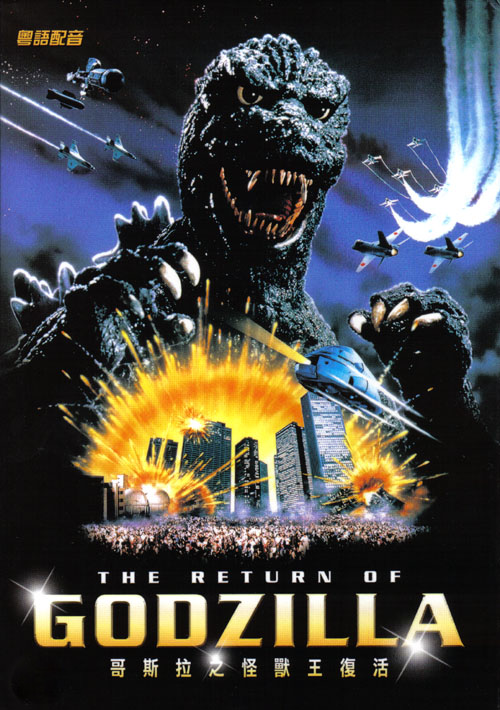 The Return of Godzilla failed to create an atomic flare-up at the Japanese box-office, so Toho tried to sell it to foreign markets. The major U.S. studios turned it down, and low-budget independent company New World purchased the rights for a skinflint $500,000. For the first time since King Kong vs. Godzilla, an American company shot new footage to insert English-speaking actors into a Godzilla movie to make it more accessible. New World managed a coup when Raymond Burr agreed to return to the role of reporter Steve Martin (now simply called “Mr. Martin” for obvious reasons).
The Return of Godzilla failed to create an atomic flare-up at the Japanese box-office, so Toho tried to sell it to foreign markets. The major U.S. studios turned it down, and low-budget independent company New World purchased the rights for a skinflint $500,000. For the first time since King Kong vs. Godzilla, an American company shot new footage to insert English-speaking actors into a Godzilla movie to make it more accessible. New World managed a coup when Raymond Burr agreed to return to the role of reporter Steve Martin (now simply called “Mr. Martin” for obvious reasons).
But any hope that hiring Raymond Burr meant New World was approaching the work respectfully vanished when the film premiered under the title Godzilla 1985. Although better than the wreck made of King Kong vs. Godzilla because it had lesser material to muck up, Godzilla 1985 mocks the Japanese original with camp humor. The new footage is cheap, chock full of product placement (Dr. Pepper took over the Pentagon, apparently), and has no connection to the Japanese scenes: military men and Raymond Burr stare at screens while a snide twerp makes cracks at the expense of Tokyo. Most aggravating of all, the movie was edited to twist the Soviets into the villains: instead of trying to stop an accidental missile launch, the Soviets purposely launch the missile. At least Raymond Burr performs his part with dignity. A stand-up fellow, Mr. Burr. One of the good guys.
Godzilla 1985 did minor-league business at the North American box-office. Times had changed, and U.S. audiences expected bigger spectacle from their SF movies. New World’s tight-fisted approach garnered them a profit, but the small gross scared away other studios. The U.S. would not see a new Japanese Godzilla film released to theaters for fifteen years.
A New Style Emerges: Godzilla vs. Biollante (1989) and Godzilla vs. King Ghidorah (1991)
Tomoyuki Tanaka was determined to continue the G-series despite the disappointment of The Return of Godzilla. Four years later, Godzilla vs. Biollante made it clear Tanaka wanted to correct his previous errors: Godzilla quit working solo and tussled with a humungous plant. Real world politics vanished, replaced with a faux-Middle Eastern country and an assassin wearing stylin’ shades. Semi-plausible science transformed into an institute of psychic children and a doctor fusing his dead daughter’s spirit with Godzilla cells and rose petals. Although Godzilla vs. Biollante comes nowhere near the best of the Heisei films, it improved enormously over its predecessor and set the SF and comic book style of the rest of the series.
A major figure in establishing the new style was Koichi Kawakita, special effects director for the rest of the Heisei films. Kawakita’s effects are the highlight of Godzilla vs. Biollante, displaying greater imagination and energy than anything seen since Destroy All Monsters in 1968. The new Godzilla suit design, which would remain consistent for the remainder of the Heisei years, is one of the best, with a long neck, cunning feline facial features, sinister all-black eyes, and enormous dorsal fins. Godzilla is fiercer and more bestial, and the confrontations between the monster and the JSDF’s array of lasers, tanks, aircraft, and battleships make for spectacular viewing.
Biollante, the first of Kawakita’s multi-stage monsters, is a pleasingly bizarre creation, although its general lack of mobility restricts it. The show belongs to Godzilla, and it’s a damned impressive show whenever the monster is takes up the screen.
When Godzilla (and Biollante) are off-screen, however, the movie is a mess of too many characters and too many subplots getting too little done. Director Kazuki Omori has always been vocal about his greater interest in American blockbusters and James Bond films than the classic Godzilla series, and he goes overboard in Godzilla vs. Biollante to make it “anything but a Godzilla film.” There’s dueling spy intrigue, psychics, secret military projects, an assassin, industrial sabotage, and a gratuitous van chase. Omori tries to knit these strands together with thematic jabber in a voiceover at the conclusion. Viewers never have a specific character to focus on, making them wish the movie would cut back to the monsters.
Godzilla vs. Biollante had a standing room-only opening in Japan, but tapered off quickly and ended up a financial failure. But the filmmaking enthusiasm was back, so Tanaka pressed ahead. He originally planned to use only new monster adversaries for Godzilla, but to help shore up the next project he tried to secure the rights to King Kong for a classic re-match. When that fell through, he turned to the biggest, baddest G-villain of all….
Godzilla vs. King Ghidorah is a highpoint of the Heisei years. Director Kazuki Omori returned, and again borrowed liberally from stateside blockbusters, in this case science fiction movies in general and the Terminator series in particular. The villains of Godzilla vs. King Ghidorah are future time travelers (“Futurians”) who trick the Japanese into manipulating the past so Godzilla blinks out of existence and the Futurians have their own mutated monster under their control, King Ghidorah, to use as a weapon of extinction against Japan. (It seems Japan will be responsible for a future economic apocalypse; the movie both rejoices over and feels trepidation about the country’s early ‘90s prosperity.) The Futurians have an invincible android as well, in case the Terminator connection wasn’t obvious enough.
Although a derivative story, the stew of elements in Godzilla vs. King Ghidorah is fun and easy to follow (standard time paradoxes aside), and the effects scenes are showstoppers and among the best of any G-film. Godzilla appears in two forms in the movie: the 100-meter atomic monster (up from 80 meters in the first two Heisei movies) and its original dinosaur form, Godzillasaurus, which is approximately the size of a Tyrannosaurs rex. The Godzillasaurus appears in the past, where the Futurians bring the protagonists to a World War II island encampment that is supposedly Godzilla’s atomic birthplace. Although the dinosaur effects are no competition for Jurassic Park, the smaller-scale action is an enjoyable variation on the usual kaiju set pieces.
The new King Ghidorah introduced in the movie lacks the hyper-kinetic power of the Showa era creature — its new roar is especially disappointing — but it gets to shine later when transformed into Mecha-King Ghidorah for the jaw-dropping showdown with Godzilla in the Shinjuku District of Tokyo. Although it feels odd to root for King Ghidorah for a change, the tremendous scale of the clash between the two beasts shows how far the Heisei series evolved over only two movies.
A major actor from the classic era, Yoshio Tsuchiya (the Controller of Planet X from Invasion of Astro-Monster) takes on a memorable role as a World War II vet turned millionaire developer who believes Godzilla is a personal protector god — and turns fatalistic when he finds out how wrong he is. Tsuchiya gives the best performance in the Heisei series, and his character’s journey into disillusionment until he allows Godzilla to kill him has emotional and thematic weight worthy of Ishiro Honda.
One of the four “Godzilla Fathers” returned for King Ghidorah after a sixteen-year absence: composer Akira Ifukube. Although most of his score reworks his earlier themes, it’s thunderous and makes the film feel twice as epic. His return was such a success that he scored three more of Heisei movies.
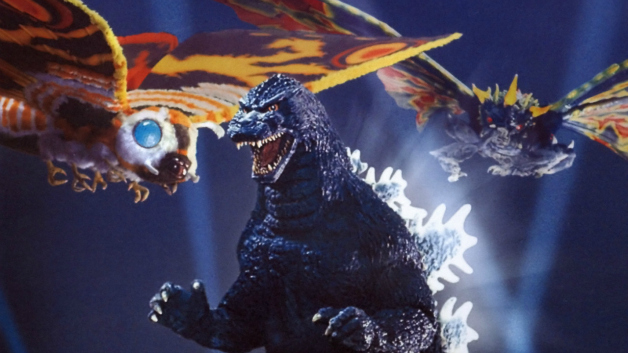 A New Peak: Godzilla vs. Mothra (1992) and Godzilla vs. Mechagodzilla II (1993)
A New Peak: Godzilla vs. Mothra (1992) and Godzilla vs. Mechagodzilla II (1993)
The next two films mark the high points for the Heisei series: the commercial and the artistic high respectively. All the elements came together to pack audiences into theaters and keep them marvelously entertained.
Godzilla vs. Mothra raked in the most money of any Godzilla film since King Kong vs. Godzilla, and ranked second only to Jurassic Park at the Japanese box-office that year. Kazuki Omori returned as screenwriter only, and new director Tadao Okawara took over the reins, on his way to becoming the best director of the Heisei films.
Toho positioned the gentler creature Mothra as a direct appeal to female viewers, who made up 70% of the Japanese movie-going audience at the time. The human story centers on a simple tale about a divorced couple reuniting with the help of their young daughter. Godzilla vs. Mothra is closer to a remake of 1960’s Mothra, with Mothra coming to Japan because of the kidnapping of its fairy priestesses, and then transforming into adult form from a cocoon on Tokyo Tower. Tossed into the mix at Tanaka’s insistence is a new monster, a “dark Mothra” called Battra that resembles a mutated fly. Godzilla plays a supporting role, basically a villain who pops up when necessary but doesn’t have much to do with the story aside from adding marquee value.
Mothra vs. Godzilla is a lightweight, enjoyable film, and the showdown in a Yokohama amusement park where Battra and Mothra unite to join forces to beat Godzilla is impressive. A giant fly smashing Godzilla with a Ferris wheel… good times.
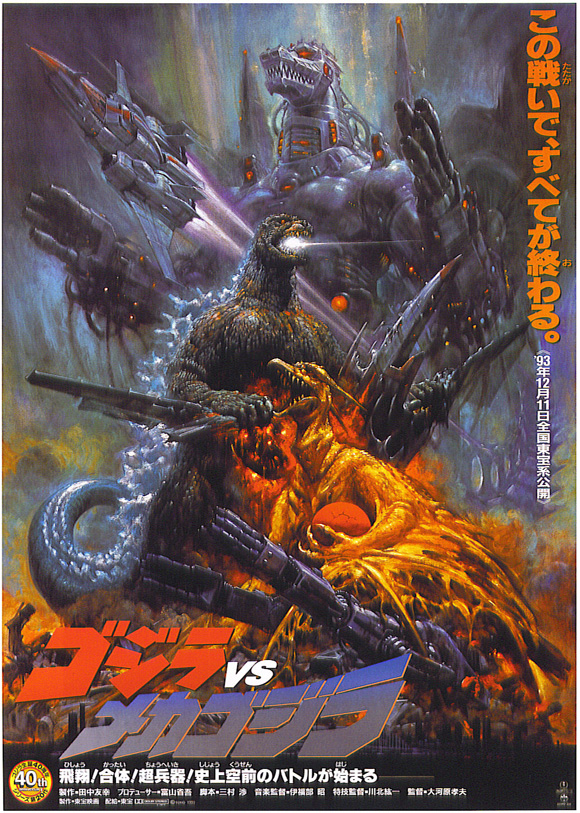 (When released to home video in the U.S., the movie was retitled Godzilla and Mothra: The Battle for Earth to avoid confusing it with the 1964 Mothra vs. Godzilla, which in the U.S. was often titled Godzilla vs. Mothra. Japanese monster movie titles are confusing.)
(When released to home video in the U.S., the movie was retitled Godzilla and Mothra: The Battle for Earth to avoid confusing it with the 1964 Mothra vs. Godzilla, which in the U.S. was often titled Godzilla vs. Mothra. Japanese monster movie titles are confusing.)
The box-office sweep of Godzilla vs. Mothra ignited the creative fires at Toho. Next year’s Godzilla vs. Mechagodzilla II is the best of the Heisei series, and one of the all-around champs of the G-films.
Although the Roman numeral in the official English title makes it sound like a direct sequel to 1974’s Godzilla vs. Mechagodzilla, it’s only used to differentiate the two. The new movie follows directly on events in the previous films, with the anti-Godzilla international organization G-Force planning to kill the monster using a piloted giant robot made from the future-tech of Mecha-King Ghidorah.
Godzilla vs. Mechagodzilla II bridges the female target audience of Godzilla vs. Mothra and the male target audience of Godzilla vs. King Ghidorah, and miraculously manages a best-of-both-worlds outcome. The story is streamlined, although more intricate than Godzilla vs. Mothra, with heavy emphasis on military technology and two impressive super-weapons, the titular Mechagodzilla and the flying attack vehicle Garuda, which can link to Mechagodzilla to form … wait for it … Super Mechagodzilla! But a parallel, gentler plot-strand features the discovery of a Godzilla egg and the hatching of “Baby,” a non-mutated Godzillasaurus who befriends a female scientist. And Rodan shows up as well!
Godzilla vs. Mechagodzilla II is a blast. Director Okawara finds the right balance of full-on monster mayhem with the human story, keeping the action motivated and moving at a fast pace. The use of Baby as the story’s objective gives the movie a strong core that, for the first time in the Heisei series, pushes Godzilla toward a sympathetic interpretation. Screenwriter Wataru Mimura crafts a Nature vs. Technology theme that eventually makes G-Force and their giant robot the true villains in the final battle — which is a stunner, by the way.
Aside from the superb finale, effects supervisor Kawakita stages a down-and-dirty fight between Godzilla and Rodan that gets away from the usual Heisei style of monsters blasting beam weapons at each other and instead captures early classic Toho kaiju thrills. And Ifukube’s score is one of his finest. This movie has just about everything.
Let’s Forget This One Happened: Godzilla vs. SpaceGodzilla (1994)
Godzilla vs. Megalon is the worst Godzilla film Toho has made… but I’d still rather watch it than the low point of the Heisei series, which ironically followed its high point: Godzilla vs. SpaceGodzilla.
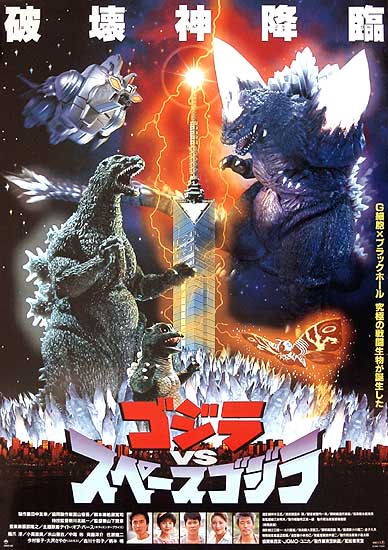 Coasting on two successes that appealed to the male and female demographics, Toho decided to target teenagers. Apparently unaware that teenagers were already a large part of the audience for these films, the studio hired a director and writers with no kaiju or SF experience, but instead a background in “Teen Idol” films. The situation is similar to what happened with Godzilla vs. Hedorah: a new creative team took over and refashioned the series for youth appeal with bizarre results. However, Godzilla vs. Hedorah has kooky charm. SpaceGodzilla is a tonal disaster, cheap-looking with embarrassing effects. Worst of all, it’s boring. Godzilla vs. SpaceGodzilla is a movie targeted toward no one.
Coasting on two successes that appealed to the male and female demographics, Toho decided to target teenagers. Apparently unaware that teenagers were already a large part of the audience for these films, the studio hired a director and writers with no kaiju or SF experience, but instead a background in “Teen Idol” films. The situation is similar to what happened with Godzilla vs. Hedorah: a new creative team took over and refashioned the series for youth appeal with bizarre results. However, Godzilla vs. Hedorah has kooky charm. SpaceGodzilla is a tonal disaster, cheap-looking with embarrassing effects. Worst of all, it’s boring. Godzilla vs. SpaceGodzilla is a movie targeted toward no one.
Director Kensho Yamashita and his writers are way out of their depth with the giant monster genre, and seem to have no clue how to integrate monster battles with their cheesy romance story and lightweight espionage plot. Psychic Miki Saegusa, a supporting character since Godzilla vs. Biollante, gets to take half the lead in the love story, but it fizzles because she and her co-star have no chemistry at all.
Still, some kaiju films have triumphed over boring puny humans. Godzilla vs. SpaceGodzilla is not one of them. Koichi Kawakita’s refashioning of Baby Godzilla into a roly-poly bug-eyed toy is a huge miscalculation. There was some potential for SpaceGodzilla as a concept, but in execution the giant bulky crystals on the monster’s shoulders make it look ludicrous and on the verge of tipping over every time it steps. And Mogera, the new G-Force robot loosely based on the alien robot from 1957’s The Mysterians, might as well be an off-the-shelf coffee maker from Target. It was probably a clearance item.
The monster scenes drag and drag. Godzilla takes half an hour to move anywhere. The final battle consumes hours of screen time without anything happening. Making everything worse are special effects that look spectacularly bad, as if Kawakita forgot everything he knew about his art in only a year. The space battle between Mogera and SpaceGodzilla is the VFX low-point of the Heisei series: the two combatants fly around in an “asteroid field” that looks like a fifth-grader’s science fair project. (And not a winning science fair project, either.)
This film stinks. I’m done with it.
Godzilla Is Dead! Long Live Godzilla! Godzilla vs. Destoroyah (1995)
Toho realized their error and brought back the team of Okawara and Omori for the next movie. But series fatigue had set in, and the studio recognized it — so they plotted a spectacular closing event while doing a bit of sales maneuvering. As Toho negotiated a deal with Sony/TriStar to make the long-delayed big-budget U.S. Godzilla film, the studio announced that in the next movie Godzilla was going to die.
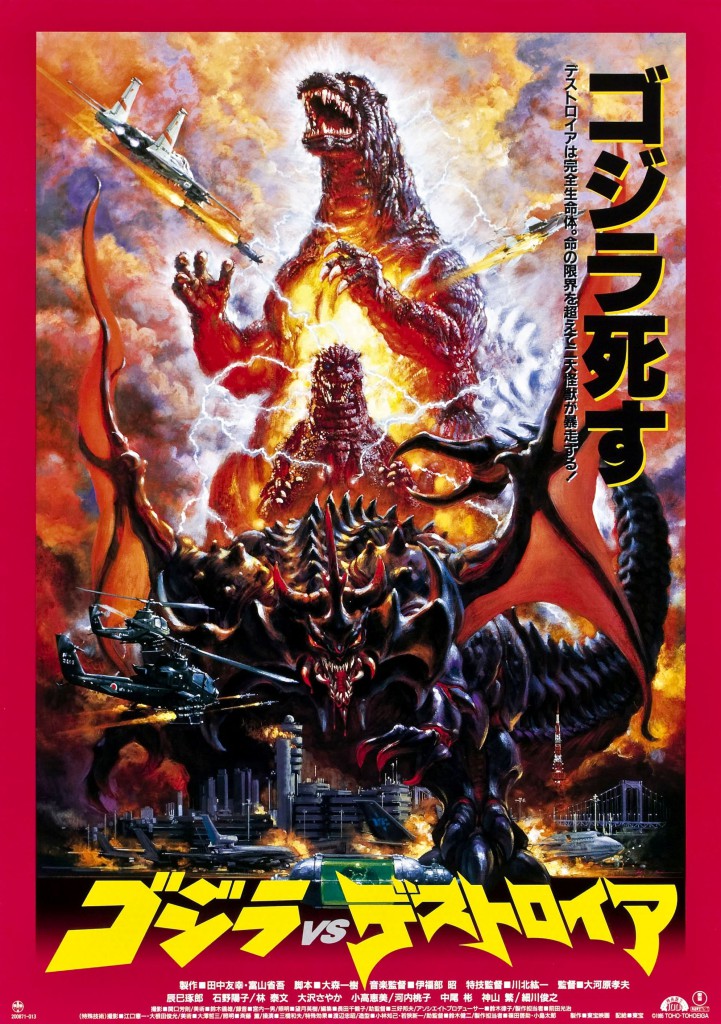 No, not a spoiler. The Japanese poster for the film shouts: GODZILLA DIES! It was an effective lure for audiences to see Godzilla vs. Destoroyah (sometimes written as Godzilla vs. Destroyah for U.S. releases), which concludes with the legendary monster disintegrating from a radioactive meltdown in its body as the Japanese Defense Force desperately tries to contain an extinction-level event across the planet.
No, not a spoiler. The Japanese poster for the film shouts: GODZILLA DIES! It was an effective lure for audiences to see Godzilla vs. Destoroyah (sometimes written as Godzilla vs. Destroyah for U.S. releases), which concludes with the legendary monster disintegrating from a radioactive meltdown in its body as the Japanese Defense Force desperately tries to contain an extinction-level event across the planet.
Of all the Heisei movies, Godzilla vs. Destoroyah connects the closest to the 1954 original. Momoko Koichi reprises her role as Emiko Yamane, the female lead from Godzilla; Dr. Yamane’s grandson plays a main role in G-Force’s new Godzilla offensive; and the consequences of the use of Dr. Serizawa’s oxygen destroyer forty-one years earlier leads to the creation of a new monster, Destoroyah, a crustacean creature with multiple forms, proving that Serizawa’s hesitation about using his device was prophetic.
Although Destoroyah is a fun, outlandish Godzilla opponent, the new monster is really a subplot to the main story about Godzilla approaching a nuclear meltdown that could engulf the world. Godzilla is a true force of atomic rage, burning red and smoking as its body approaches critical. Godzilla Jr., now a half-sized juvenile version of its parent, is again put at the center of the action, coming into its own as a monster worthy of the G-name when it battles one of Destoroyah’s smaller stages.
Godzilla vs. Destoroyah is mostly worthy of its position as the final Heisei installment and the movie that killed off Godzilla. The legendary monster’s death, done with funereal dignity, is extremely moving and makes an effort to recall Honda’s original film and the theme of humanity bringing about its own destruction. The movie doesn’t reach the level of entertainment of Godzilla vs. King Ghidorah or Godzilla vs. Mechagodzilla II, but if viewed as a second attempt at the seriousness that The Return of Godzilla failed to achieve eleven years earlier, it succeeds.
Godzilla vs. Destoroyah was the final film for the Godzilla Fathers still alive at the time. Producer Tomoyuki Tanaka died in 1996. Composer Akira Ifukube, who considered the requiem music for Godzilla’s death his finest piece of work, returned to retirement and lived quietly until 2008.
Perhaps it was best that Tanaka died in 1996. He did not live to see what TriStar and director Roland Emmerich did to his co-creation.
Unfortunately, the rest of us did.
NEXT: That thing and the Millennium Era
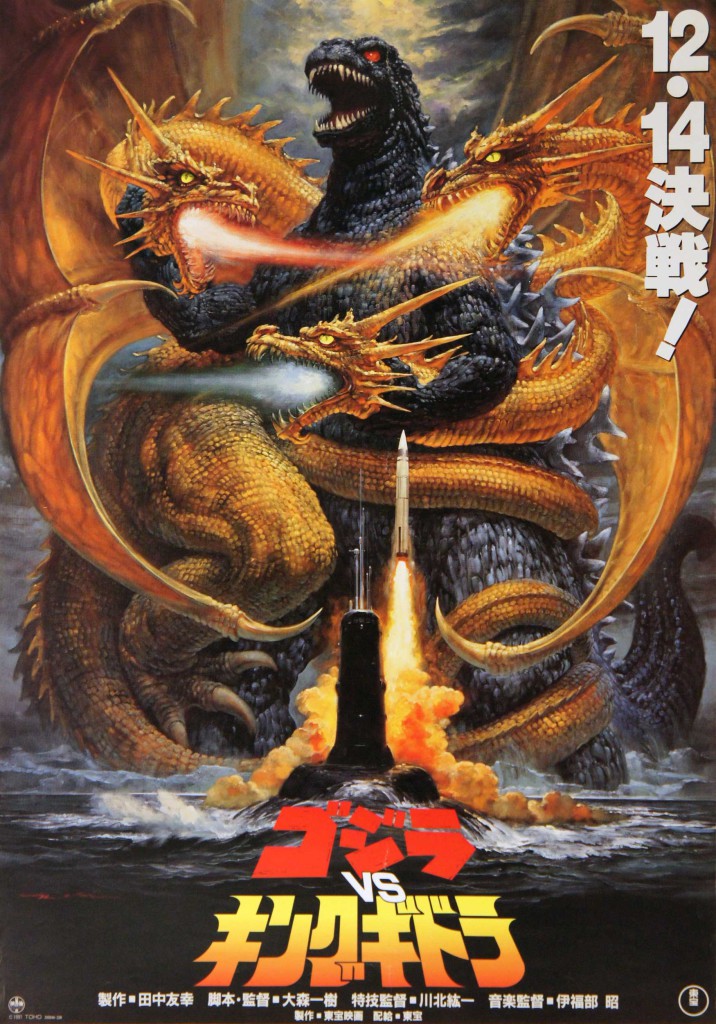
They’re a mixed bag but on the whole more pluses than minuses. It’s just a shame that most of them haven’t been given a decent DVD release.
(And I know that it goes outside of your purview, per discussion back in the first installment, but I’d recommend both of the Rebirth of Mothra films that got a US release. They’re surprisingly fun and head further down the scale towards pure fantasy.)
I’m glad to finally get all these films in perspective! When I caught the last part of Godzilla vs. Destoroyah on cable TV, I’d seen most of the earlier Godzilla films up through Godzilla 1985, so I was wondering, “Why is Godzilla overheating? Is he really going to die? And why is there a mini-Godzilla running around?” Clearly there was a lot of story I’d missed, and it was quite intriguing. I did go back and catch the new incarnation of Godzilla vs. Mothra, and was very impressed by the darker, grittier, yet somehow more vibrantly colorful interpretations.
[…] Part 1: Origins (1954–1962) Part 2: The Golden Age (1963–1968) Part 3: Down and Out in Osaka (1969–1983) Part 4: The Heisei Era (1984–1996) […]
[…] A History of Godzilla on Film, Part 4: The Heisei Era (1984–1996) […]